At the beginning of February, I spent 5 nights aboard the R/V Endeavor with about 15 other scientists from the University of Rhode Island (GSO), Woods Hole Oceanographic Institution and Wellesley College. We participated in the winter transect for the Northeast US Shelf Long Term Ecological Research (NES LTER) project.
What is the NES LTER?
Since 1980, the National Science Foundation has funded 28 LTER sites around the US and Antarctica, many of which are terrestrial. LTER sites are important because they are studied over long periods of time – some of the sites have been researched for over 30 years! Collecting the same measurements over time enables scientists to understand how processes at a particular site may be changing, either from natural variation or from human influence. The NES LTER is a recently funded marine site, examining how planktonic food webs are changing on the Northeast US Continental Shelf. There are four NES LTER cruises evenly spaced through the year for scientists to study the seasonal and long-term changes of food webs.
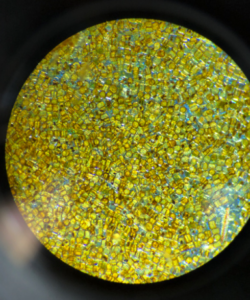
Phytoplankton are at the bottom of the marine food web and they fuel the productivity of ocean life; they produce oxygen through photosynthesis! In fact, did you know that every other breath of oxygen you take comes from the ocean? Zooplankton, the next step in the food web, eat phytoplankton and in turn, are eaten by various commercially important fish. The Northeast US Shelf is one of the most biologically productive areas in the world. Thus, it is important to understand how physical, chemical and biological process affect the connectivity of organisms on the Northeast US Shelf.
What does a “normal” day at sea look like?
Time on a research vessel is very expensive; think about all of the costs that go into running a research ship, such as the food we eat or the fuel needed to power the ship. To be as efficient with our valuable time as possible, as a group we worked 24 hours a day for five days straight. Don’t worry, each scientist is assigned to a 12-hour shift. My shift was noon to midnight, and by the end of the cruise I was sleeping for almost the entirety of my “off-shift.” At the beginning of each day, I had my breakfast (actually lunch) and figured out where we were on our cruise track. Depending on how close we were to the next station, I got suited up in a warm Mustang suit and headed out on deck. A mustang suit is a large insulated orange suit designed to keep you warm and protected in the rare chance you fall overboard! We collected water at multiple depths at each station using a CTD Rosette which measures various water properties such as salinity and temperature.
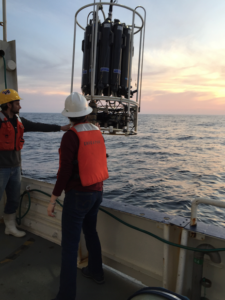
This instrument also contains large bottles called Niskin bottles that the scientists program to close at various depths in the ocean to collect seawater. As I mentioned earlier, phytoplankton fuel the marine food web. Because phytoplankton photosynthesize, they have chlorophyll-a, a pigment in their cells to help them absorb sunlight. Using a fluorometer, we measured the fluorescence (light that is re-emitted by chlorophyll) of the water to determine where in the water column the chlorophyll-maximum (chl. max) occurred. The determination of where to sample in the water column (a “water column” is simply a piece of the ocean from surface to depth) is probably one of the most important factors; well, besides making sure the bottles properly close to collect our water!
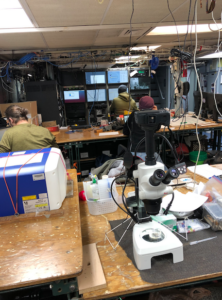
What specific research took place?
For my lab’s research, we sampled water at three depths within the water column. What this means is that for five days I was a glorified Brita filter and couldn’t have been happier because I was in the middle of ocean surrounded by nothing but water. I filtered liters and liters of water for chlorophyll and DNA analyses. Just like you and me, phytoplankton also have DNA, the genetic code for how a cell (or body) functions. Filtering water for DNA gives us the “inside look” into what is in the water at various depths across all of the stations. Other work on the cruise involved sampling zooplankton and carrying out experiments to determine how quickly the zooplankton ate the phytoplankton (grazing experiments). Coupling these multiple analyses together over a long period of time will enable us to better assess marine food webs both now and in the future.
When there was a break in the action, I went up to the Fly Bridge (the very top of the ship) to appreciate the opportunity I had to work alongside amazing scientists and admire the wonderful world we live in. Looking forward to the next cruise!
Note: this post was originally posted in February of 2019 but was lost due to a server failure. Check out this link for a recent livestream of the R/V Endeavor arriving in port on April 1st, 2020!
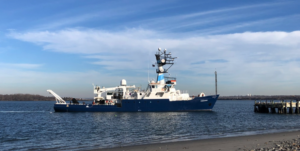
I love writing of all kinds. As a PhD student at the Graduate School of Oceanography (URI), I use using genetic techniques to study phytoplankton diversity. I am interested in understanding how environmental stressors associated with climate change affect phytoplankton community dynamics and thus, overall ecosystem function. Prior to graduate school, I spent two years as a plankton analyst in the Marine Invasions Lab at the Smithsonian Environmental Research Center (SERC) studying phytoplankton in ballast water of cargo ships and gaining experience with phytoplankton taxonomy and culturing techniques. In my free time I enjoy making my own pottery and hiking in the White Mountains (NH).

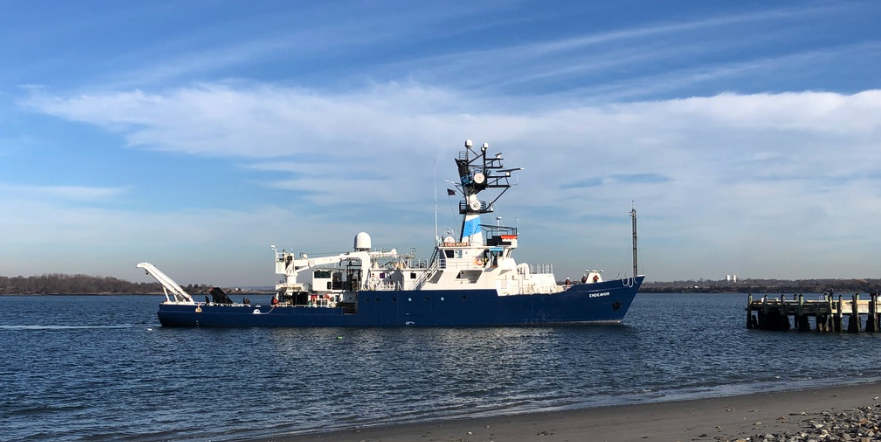
Hi, if it’s okay with you, I’d like to share your content on my @oceantech_unlocked instagram page. Thanks!
Hi Kylie, this is alright with Oceanbites! Thank you!